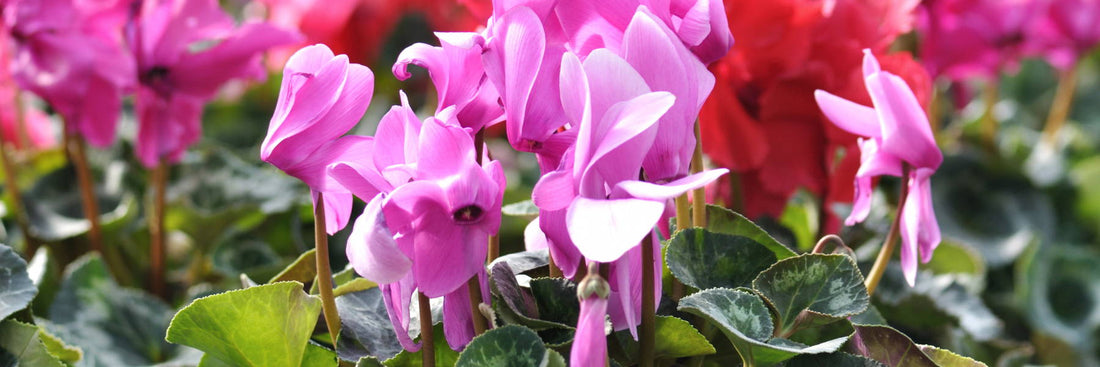Cyclamen are native to open woodlands. This means that they are adapted to bright but filtered light. Direct exposure to the noonday sun may damage their delicate foliage. They do very well if set next to a window with morning or late afternoon sun.
Temperature
Cool temperatures are essential to extend your plant’s life—about 60 to 64ºF during the day, and ideally 54 to 59°CF at night. The flowers and leaves will fade quickly in an overheated room.
Humidity
Keep your plant away from any heat source, to avoid exposing it to higher temperatures and causing it to dry out. You can raise the humidity around the plant by placing the pot on moist gravel, making sure not to allow the pot to stand directly in any water.
Watering
Cyclamen are sensitive to over watering. Soil that is too wet will rot the tuber, while the leaves will wilt and drop and the flower buds will fall off quickly if the soil is too dry. Watering the plant directly from the top in the center of the foliage or keeping the tuber too moist may cause it to rot. It is best to water thoroughly from underneath, by filling the saucer with tepid water and removing any excess water once the soil surface is moist.
Allow the soil to dry out between watering, without allowing the plant to wilt. It may be necessary to water the plant from above on occasion to flush accumulated mineral salts from the soil surface, taking care not to water the tuber directly.
Soil/Fertilizing
Use #1 Miracle Gro Potting Soil for repotting and transplanting.
Feed your plant while it is in full growth, i.e. as long as new leaves and new flowers continue to appear, with #2 All Purpose Miracle Gro fertilizer. You can fertilize the plant every other week when you water it. Because the amount of fertilizer to apply depends on the concentration of the product you are using, always follow the directions on the label.
General Care
Cyclamen are superb flowering plants. To encourage a plant to continue producing new flower buds, it is important to remove the flowers as soon as they fade. Remove any yellow leaves, as well, to keep the plant attractive and disease free. When removing spent leaves and blooms, it is important to remove the entire flower or leaf stalk, snapping it off cleanly while holding it near the base of the plant. Any part left on the plant could cause it to rot.

